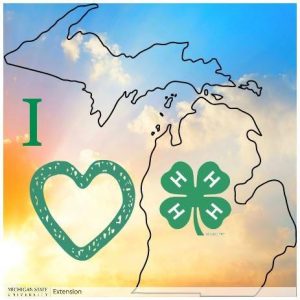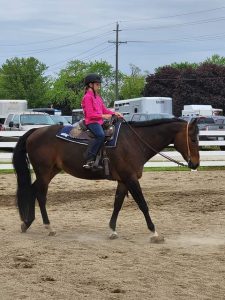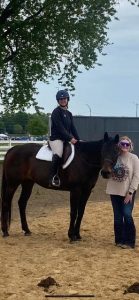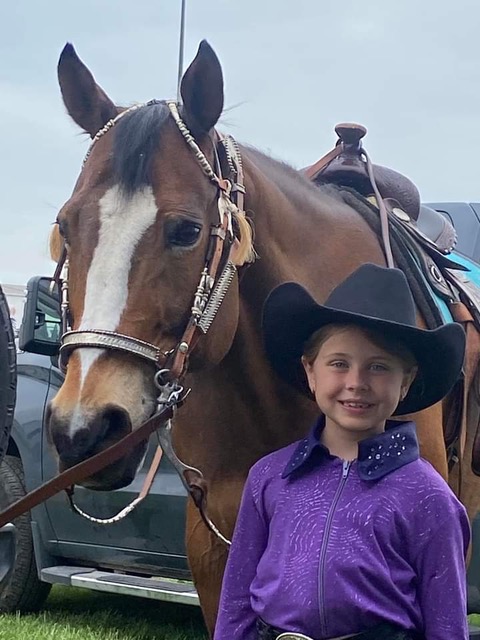The Power of 4-H
It is not the beauty of a building you should look at; it’s the construction of the foundation that will stand the test of time. – David Allan Coe
By Delores Kuhlwein
A good foundation is highly regarded as building blocks for success, and even for equestrians, that solid base is a must-have.
 4‑H is America’s largest youth development organization—empowering nearly six million young people with the skills to lead for a lifetime, states their website. It’s widely known that many of today’s equine breed show exhibitors receive their start in 4-H programs, and the Monroe County Michigan 4-H Horse and Pony Program is no exception.
4‑H is America’s largest youth development organization—empowering nearly six million young people with the skills to lead for a lifetime, states their website. It’s widely known that many of today’s equine breed show exhibitors receive their start in 4-H programs, and the Monroe County Michigan 4-H Horse and Pony Program is no exception.
“Our county has produced dozens of World Champions, Honor Roll Champions, NSBA World Champions, Congress Top 10’s, USDF winners, and more,” explains Melissa Gordon, General Superintendent of the Horses for the Monroe County Michigan 4-H Horse and Pony Program.
Like the rest of the industry, the program experienced a significant heyday as the largest 4-H program in the state many years ago, but also like others, they saw numbers change with the times. “As many have seen youth in horse projects decline, so did we,” says Gordon, who grew up in the program and has seen the shift first hand. Her parents were leaders, she was a leader and a Superintendent, and she watched her daughter flourish in the program. Though she retired in 2016, passion for the industry inspired her to return in 2022.
The decline challenged Monroe County Michigan 4-H to get creative, knowing that programs like 4-H were the entry point for many exhibitors, offering education and developing skills, not to mention a healthy outlet for youth in general.
 “We had 70 youth in 2022,” Gordon explains. “We got creative and we moved to a leveling program. We now offer leadline; walk only; walk trot level 1-3; walk trot; canter 1-3; and mini horse level 1-3. Our levels are based on specific skills, so the youth compete on a level playing field with their peers. In our program demographic, 80% of the youth are age 12 and under. With that in mind, we felt developing skill level and education opportunities was where we should shift our focus, too.”
“We had 70 youth in 2022,” Gordon explains. “We got creative and we moved to a leveling program. We now offer leadline; walk only; walk trot level 1-3; walk trot; canter 1-3; and mini horse level 1-3. Our levels are based on specific skills, so the youth compete on a level playing field with their peers. In our program demographic, 80% of the youth are age 12 and under. With that in mind, we felt developing skill level and education opportunities was where we should shift our focus, too.”
They additionally added classes for youth without access to a horse, including Breyer Model classes and stick horse classes. “We also added MED, Monroe Equestrian Development classes,” Gordon says. “They’re modeled similar to YEDA for the youth that take lessons. But don’t/can’t own or lease a horse.”
The result of their approach: “Our enrollment jumped to 147 youth this year!”
Now their barn at the fair isn’t quite large enough, so they’re hoping to overflow into the draft horse barn. “Not having enough stalls is a good problem to have!” Gordon exclaims.
 They’re now already tossing around ideas for more opportunities in 2024 based on the interest of the youth, Gordon reveals. “Dr. Karen Waite (who judged their most recent show) was instrumental in helping us determine the appropriate level for the youth and provide feedback at our show this past weekend. She also offered great suggestions on offering Ranch events next year.”
They’re now already tossing around ideas for more opportunities in 2024 based on the interest of the youth, Gordon reveals. “Dr. Karen Waite (who judged their most recent show) was instrumental in helping us determine the appropriate level for the youth and provide feedback at our show this past weekend. She also offered great suggestions on offering Ranch events next year.”
The recent show that provided feedback from Dr. Waite was a big hit with parents, too. “The feedback and leveling show offered a unique opportunity for the kids to learn how small adjustments can improve their experience and then show off that new technique right away. Dr. Waite and the Monroe County 4H volunteers were supportive and encouraging and the kids left with a positive mindset and new goals,” says parent Liz Brown.
The American Tobiano Horse Association recently awarded their program a $500 grant, and Gordon encourages other industry individuals and associations to support their local 4-H program. “4-H is where most breed show participants get their start.”
To learn more about 4-H or to find a local club, visit: 4-H | Positive Youth Development, Mentorship, & Education. Melissa Gordon adds that 4-H is always in need of experienced club leaders and volunteers.











